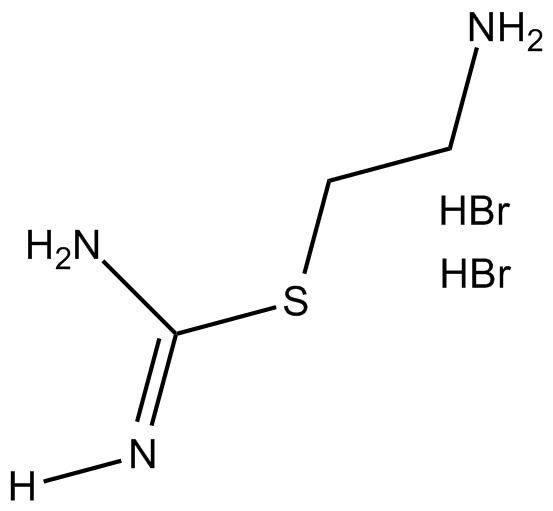S-(2-aminoethyl) Isothiourea (dihydrobromide) (Synonyms: Antiradon,NSC 22877) |
| Catalog No.GC11745 |
non-selective inhibitor of all NOS isoforms
Products are for research use only. Not for human use. We do not sell to patients.

Cas No.: 56-10-0
Sample solution is provided at 25 µL, 10mM.
S-(2-aminoethyl) Isothiourea (dihydrobromide) is a potent and non-selective inhibitor of NOS with Ki values of 1.8, 2.1, and 0.59 μM for human nNOS, eNOS, and iNOS, respectively [1].
In the brain, nitric oxide (NO), which is synthesized from L-arginine (Arg) by NO synthase (NOS), acts as both an intra- and an intercellular second messenger. Nitric oxide synthase (iNOS, eNOS, and nNOS) catalyzed the production of NO in the two-step oxidation of L-arginine. The three isozymes produce NO in separate tissues for different purposes in both normal and diseased states [1].
S-(2-aminoethyl) Isothiourea is a potent and non-selective NOS inhibitor with Ki values of 1.8, 2.1, and 0.59 μM for human nNOS, eNOS, and iNOS, respectively [1].
Reference:
[1]. Garvey EP, Oplinger JA, Tanoury GJ, et al. Potent and selective inhibition of human nitric oxide synthases. Inhibition by non-amino acid isothioureas. J Biol Chem. 1994 Oct 28;269(43):26669-76.
Average Rating: 5 (Based on Reviews and 35 reference(s) in Google Scholar.)
GLPBIO products are for RESEARCH USE ONLY. Please make sure your review or question is research based.
Required fields are marked with *




















